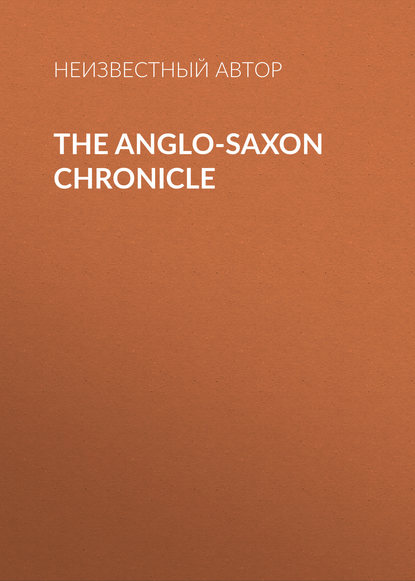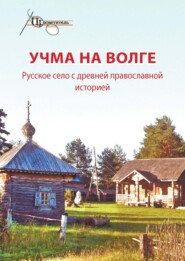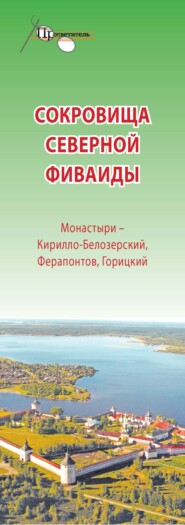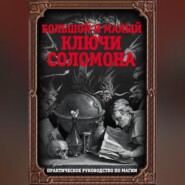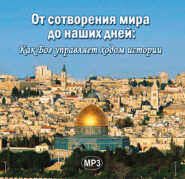По всем вопросам обращайтесь на: info@litportal.ru
(©) 2003-2024.
✖
The Anglo-Saxon Chronicle
Настройки чтения
Размер шрифта
Высота строк
Поля
"Chron. ap." Gale, ii. 21.
26
"Virum Latina, Graec, et Saxonica lingua atque eruditione multipliciter instructum."—Bede, "Ecclesiastical History", v. 8. "Chron. S. Crucis Edinb. ap.", Wharton, i. 157.
27
The materials, however, though not regularly arranged, must be traced to a much higher source.
28
Josselyn collated two Kentish MSS. of the first authority; one of which he calls the History or Chronicle of St. Augustine's, the other that of Christ Church, Canterbury. The former was perhaps the one marked in our series "C.T." A VI.; the latter the Benet or Plegmund MS.
29
Wanley observes, that the Benet MS. is written in one and the same hand to this year, and in hands equally ancient to the year 924; after which it is continued in different hands to the end. Vid. "Cat." p. 130.
30
Hickes supposed the Laud or Peterborough Chronicle to have been compiled by Hugo Candidus (Albus, or White), or some other monk of that house.
31
See A.D. xxxiii., the aera of Christ's crucifixion, p. 23, and the notes below.
32
See Playfair's "System of Chronology", p. 49.
33
Playfair says 527: but I follow Bede, Florence of Worcester, and others, who affirm that the great paschal cycle of Dionysius commenced from the year of our Lord's incarnation 532—the year in which the code of Justinian was promulgated. "Vid. Flor. an." 532, 1064, and 1073. See also M. West. "an." 532.
34
"Vid. Prol. in Chron." Bervas. "ap. X." Script. p. 1338.
35
Often did the editor, during the progress of the work, sympathise with the printer; who, in answer to his urgent importunities to hasten the work, replied once in the classical language of Manutius: "Precor, ut occupationibus meis ignoscas; premor enim oneribus, et typographiae cura, ut vix sustineam." Who could be angry after this?
36
Miss Gurney, of Keswick, Norfolk. The work, however, was not published.
37
This introductory part of the "Chronicle" to An. I. first printed by Gibson from the Laud MS. only, has been corrected by a collation of two additional MSS. in the British Museum, "Cotton Tiberius B" lv. and "Domitianus A" viii. Some defects are also here supplied. The materials of this part are to be found in Pliny, Solinus, Orosius, Gildas, and Bede. The admeasurement of the island, however inaccurate, is from the best authorities of those times, and followed by much later historians.
38
Gibson, following the Laud MS. has made six nations of five, by introducing the British and Welsh as two distinct tribes.
39
"De tractu Armoricano."—Bede, "Ecclesiastical History" i. I. The word Armenia occurring a few lines above in Bede, it was perhaps inadvertently written by the Saxon compiler of the "Chronicle" instead of Armorica.
40
In case of a disputed succession, "Ubi res veniret in dabium," etc.—Bede, "Ecclesiastical History" i. I.
41
Reada, Aelfr.; Reuda, Bede, Hunt. etc. Perhaps it was originally Reutha or Reotha.
42
This is an error, arising from the inaccurately written MSS. of Orosius and Bede; where "in Hybernia" and "in Hiberniam" occur for "in hiberna". The error is retained in Wheloc's Bede.
43
Labienus = Laberius. Venerable Bede also, and Orosius, whom he follows verbatim, have "Labienus". It is probably a mistake of some very ancient scribe, who improperly supplied the abbreviation "Labius" (for "Laberius") by "Labienus".
44
Of these early transactions in Britain King Alfred supplies us with a brief but circumstantial account in his Saxon paraphrase of "Orosius".
45
"8 die Aprilis", Flor. M. West.
46
Gibbon regrets this chronology, i.e. from the creation of the world, which he thinks preferable to the vulgar mode from the Christian aera. But how vague and uncertain the scale which depends on a point so remote and undetermined as the precise time when the world was created. If we examine the chronometers of different writers we shall find a difference, between the maximum and the minimum, of 3368 years. The Saxon chronology seems to be founded on that of Eusebius, which approaches the medium between the two extremes.
47
An. 42, Flor. This act is attributed by Orosius, and Bede who follows him, to the threatening conduct of Caligula, with a remark, that it was he (Pilate) who condemned our Lord to death.
48
An. 48, Flor. See the account of this famine in King Alfred's "Orosius".
49
Those writers who mention this discovery of the holy cross, by Helena the mother of Constantine, disagree so much in their chronology, that it is a vain attempt to reconcile them to truth or to each other. This and the other notices of ecclesiastical matters, whether Latin or Saxon, from the year 190 to the year 380 of the Laud MS. and 381 of the printed Chronicle, may be safely considered as interpolations, probably posterior to the Norman Conquest.
50
26
"Virum Latina, Graec, et Saxonica lingua atque eruditione multipliciter instructum."—Bede, "Ecclesiastical History", v. 8. "Chron. S. Crucis Edinb. ap.", Wharton, i. 157.
27
The materials, however, though not regularly arranged, must be traced to a much higher source.
28
Josselyn collated two Kentish MSS. of the first authority; one of which he calls the History or Chronicle of St. Augustine's, the other that of Christ Church, Canterbury. The former was perhaps the one marked in our series "C.T." A VI.; the latter the Benet or Plegmund MS.
29
Wanley observes, that the Benet MS. is written in one and the same hand to this year, and in hands equally ancient to the year 924; after which it is continued in different hands to the end. Vid. "Cat." p. 130.
30
Hickes supposed the Laud or Peterborough Chronicle to have been compiled by Hugo Candidus (Albus, or White), or some other monk of that house.
31
See A.D. xxxiii., the aera of Christ's crucifixion, p. 23, and the notes below.
32
See Playfair's "System of Chronology", p. 49.
33
Playfair says 527: but I follow Bede, Florence of Worcester, and others, who affirm that the great paschal cycle of Dionysius commenced from the year of our Lord's incarnation 532—the year in which the code of Justinian was promulgated. "Vid. Flor. an." 532, 1064, and 1073. See also M. West. "an." 532.
34
"Vid. Prol. in Chron." Bervas. "ap. X." Script. p. 1338.
35
Often did the editor, during the progress of the work, sympathise with the printer; who, in answer to his urgent importunities to hasten the work, replied once in the classical language of Manutius: "Precor, ut occupationibus meis ignoscas; premor enim oneribus, et typographiae cura, ut vix sustineam." Who could be angry after this?
36
Miss Gurney, of Keswick, Norfolk. The work, however, was not published.
37
This introductory part of the "Chronicle" to An. I. first printed by Gibson from the Laud MS. only, has been corrected by a collation of two additional MSS. in the British Museum, "Cotton Tiberius B" lv. and "Domitianus A" viii. Some defects are also here supplied. The materials of this part are to be found in Pliny, Solinus, Orosius, Gildas, and Bede. The admeasurement of the island, however inaccurate, is from the best authorities of those times, and followed by much later historians.
38
Gibson, following the Laud MS. has made six nations of five, by introducing the British and Welsh as two distinct tribes.
39
"De tractu Armoricano."—Bede, "Ecclesiastical History" i. I. The word Armenia occurring a few lines above in Bede, it was perhaps inadvertently written by the Saxon compiler of the "Chronicle" instead of Armorica.
40
In case of a disputed succession, "Ubi res veniret in dabium," etc.—Bede, "Ecclesiastical History" i. I.
41
Reada, Aelfr.; Reuda, Bede, Hunt. etc. Perhaps it was originally Reutha or Reotha.
42
This is an error, arising from the inaccurately written MSS. of Orosius and Bede; where "in Hybernia" and "in Hiberniam" occur for "in hiberna". The error is retained in Wheloc's Bede.
43
Labienus = Laberius. Venerable Bede also, and Orosius, whom he follows verbatim, have "Labienus". It is probably a mistake of some very ancient scribe, who improperly supplied the abbreviation "Labius" (for "Laberius") by "Labienus".
44
Of these early transactions in Britain King Alfred supplies us with a brief but circumstantial account in his Saxon paraphrase of "Orosius".
45
"8 die Aprilis", Flor. M. West.
46
Gibbon regrets this chronology, i.e. from the creation of the world, which he thinks preferable to the vulgar mode from the Christian aera. But how vague and uncertain the scale which depends on a point so remote and undetermined as the precise time when the world was created. If we examine the chronometers of different writers we shall find a difference, between the maximum and the minimum, of 3368 years. The Saxon chronology seems to be founded on that of Eusebius, which approaches the medium between the two extremes.
47
An. 42, Flor. This act is attributed by Orosius, and Bede who follows him, to the threatening conduct of Caligula, with a remark, that it was he (Pilate) who condemned our Lord to death.
48
An. 48, Flor. See the account of this famine in King Alfred's "Orosius".
49
Those writers who mention this discovery of the holy cross, by Helena the mother of Constantine, disagree so much in their chronology, that it is a vain attempt to reconcile them to truth or to each other. This and the other notices of ecclesiastical matters, whether Latin or Saxon, from the year 190 to the year 380 of the Laud MS. and 381 of the printed Chronicle, may be safely considered as interpolations, probably posterior to the Norman Conquest.
50





